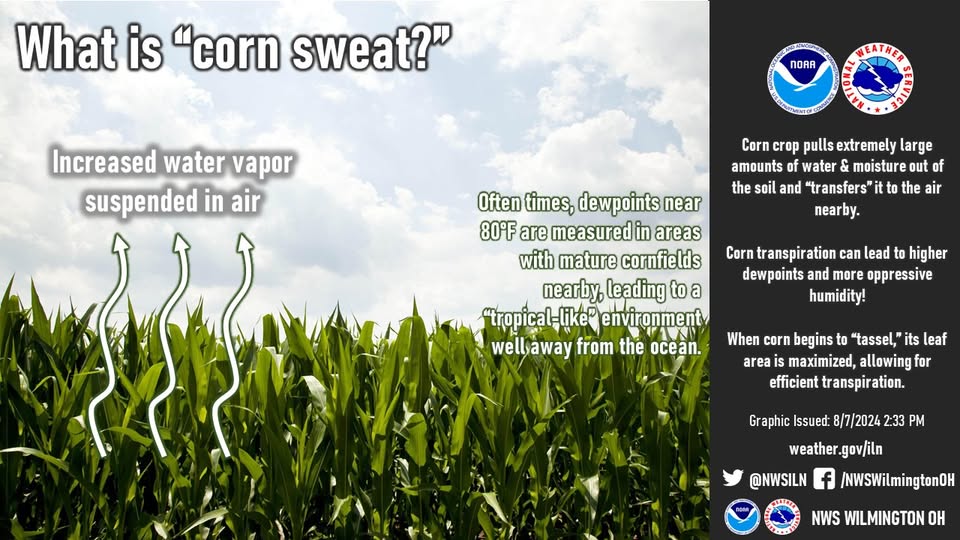
CHILLICOTHE, Ohio — If you’ve ever stepped outside during an Ohio Valley summer and wondered why it feels more like the Gulf Coast than the Midwest, the answer may lie in the rows of corn growing just down the road.
The National Weather Service (NWS) says a phenomenon known as “corn sweat” is a major contributor to the area’s oppressive humidity during peak growing season. The term refers to the large amounts of water vapor released by corn crops through a process called transpiration—where water is drawn up from the soil and released into the air through the leaves.

“When corn begins to tassel—the stage when it’s fully mature—its leaf area is maximized, and so is its ability to release moisture into the atmosphere,” said NWS Wilmington. “This can drive dewpoints up to near 80°F, creating a tropical-like environment even hundreds of miles from the nearest ocean.”
This added moisture doesn’t just make it feel hotter—it raises the dewpoint, which directly impacts how muggy and uncomfortable the air feels. According to the NWS, cornfields in full bloom can create localized humidity spikes, especially when paired with high summer temperatures.
While “corn sweat” might sound like something out of a country song, it’s a real meteorological effect with very real consequences for heat stress, air quality, and summer weather patterns.
For more science behind this sticky sensation, visit weather.gov/iln.











